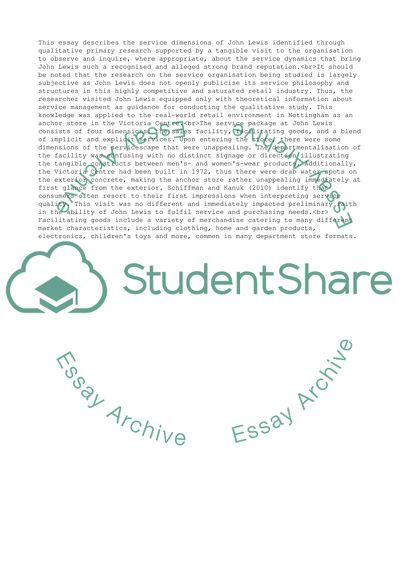Cite this document
(Analysis of Service Operations at John Lewis Department Store Essay Example | Topics and Well Written Essays - 2500 words, n.d.)
Analysis of Service Operations at John Lewis Department Store Essay Example | Topics and Well Written Essays - 2500 words. https://studentshare.org/management/1797157-managing-service-operations
Analysis of Service Operations at John Lewis Department Store Essay Example | Topics and Well Written Essays - 2500 words. https://studentshare.org/management/1797157-managing-service-operations
(Analysis of Service Operations at John Lewis Department Store Essay Example | Topics and Well Written Essays - 2500 Words)
Analysis of Service Operations at John Lewis Department Store Essay Example | Topics and Well Written Essays - 2500 Words. https://studentshare.org/management/1797157-managing-service-operations.
Analysis of Service Operations at John Lewis Department Store Essay Example | Topics and Well Written Essays - 2500 Words. https://studentshare.org/management/1797157-managing-service-operations.
“Analysis of Service Operations at John Lewis Department Store Essay Example | Topics and Well Written Essays - 2500 Words”. https://studentshare.org/management/1797157-managing-service-operations.


